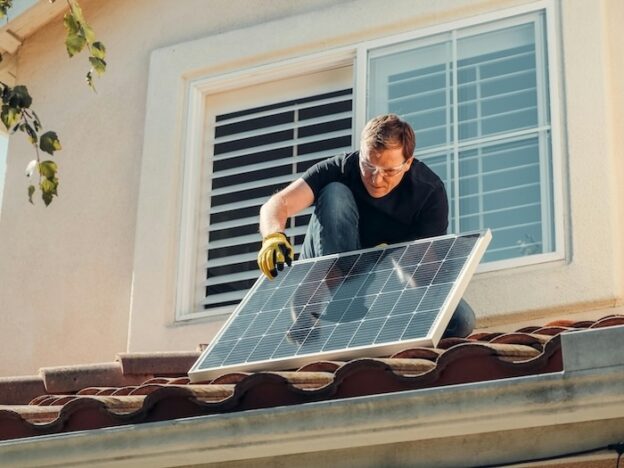Rising energy costs and environmental concerns have made energy-efficient upgrades more important than ever. For example, homeowners in Pittsburgh, Pennsylvania are becoming more focused on sustainable living.
A green home is not just about solar panels or large-scale renovations. Simple improvements like better insulation, efficient lighting, and upgraded windows can make a big difference. Whether living in a historic Pittsburgh home or a newly built property, there are many ways to improve energy efficiency and comfort.
Upgrading Insulation for Better Energy Efficiency
Proper insulation is essential for keeping a home comfortable throughout the year. Without good insulation, heating and cooling systems must work harder to maintain indoor temperatures. This leads to higher energy consumption and increased utility costs.
Pittsburgh experiences cold winters and humid summers, making insulation upgrades a smart investment. Attic insulation prevents heat from escaping during winter, while wall and floor insulation helps regulate indoor temperatures year-round. Older homes in the area may have outdated or insufficient insulation, leading to drafts and uneven heating.
Fiberglass, cellulose, and spray foam insulation are some of the most effective materials for improving energy efficiency. These options help seal gaps and prevent air leaks, reducing the strain on HVAC systems.
Installing Energy-Efficient Windows for a More Comfortable Home
Windows play a big role in a home’s energy efficiency. Old or poorly sealed windows allow drafts, making it difficult to maintain a stable indoor temperature. Heat loss in the winter and heat gain in the summer both contribute to higher energy bills.
Modern energy-efficient windows use multiple panes of glass, insulating gas fills, and advanced coatings to minimize heat transfer. These features help maintain a comfortable indoor environment while reducing the workload on heating and cooling systems.
If you’re looking for a local Pittsburgh energy-efficient window company, working with one that offers high-quality products can improve insulation, cut energy waste, and even enhance curb appeal. Properly installed energy-efficient windows also help reduce noise pollution, which is especially useful for homes in busy neighborhoods.
Another benefit of energy-efficient windows is moisture control. Poorly insulated windows can lead to condensation buildup, which encourages mold growth and damages interior walls. By upgrading to high-performance windows, homeowners can prevent these issues while improving air quality.
Switching to LED Lighting for Lower Energy Consumption
Lighting is an often-overlooked factor in home energy efficiency. Traditional incandescent bulbs use more electricity and generate excess heat, making them inefficient compared to modern alternatives. Switching to LED lighting is one of the easiest and most affordable ways to lower energy consumption.
LED bulbs use significantly less power than incandescent and CFL bulbs while lasting much longer. This reduces the frequency of replacements and lowers maintenance costs. LED lighting also comes in various brightness levels and color temperatures, allowing homeowners to create the perfect ambiance for each room.
Smart lighting systems offer additional energy savings. Motion sensors and timers automatically turn off lights when they’re not in use, preventing unnecessary energy waste. Some LED systems can even be controlled remotely through smartphone apps, adding convenience and efficiency.
Investing in Solar Panels for Renewable Energy
Switching to solar power is one of the most impactful ways to make a home more sustainable. By generating electricity from the sun, homeowners can reduce dependence on fossil fuels and lower monthly energy costs.
Advances in solar technology allow panels to generate power even on cloudy days. Many homeowners take advantage of state and federal incentives to offset installation costs, making solar energy more accessible.
A solar energy system includes panels, an inverter, and sometimes a battery storage unit. Batteries allow excess power to be stored for use at night or during outages. Homes with solar panels often see a drop in electricity bills, especially when combined with other energy-saving upgrades like efficient windows and insulation.
Installing solar panels requires an initial investment, but long-term savings and environmental benefits make it a worthwhile upgrade. A solar-powered home reduces carbon emissions while offering greater energy independence.
Installing a Smart Thermostat for Efficient Heating and Cooling
Heating and cooling account for a large portion of a home’s energy use. Without proper temperature control, systems can run longer than necessary, wasting electricity and increasing costs. A smart thermostat helps manage indoor temperatures more effectively.
Unlike traditional thermostats, smart models learn household routines and adjust settings accordingly. They can lower the temperature when residents are asleep or away and increase comfort when needed. Many smart thermostats connect to mobile apps, allowing homeowners to control settings remotely.
Some models also provide energy reports, helping users track heating and cooling patterns. By making small adjustments, homeowners can avoid unnecessary energy use while keeping their homes comfortable year-round.
Pairing a smart thermostat with other energy-efficient upgrades, like insulated windows and high-performance HVAC systems, further enhances indoor comfort. This combination reduces strain on heating and cooling equipment while extending its lifespan.
Using Water-Saving Fixtures to Reduce Waste
Conserving water is just as important as saving energy. Many older homes have outdated fixtures that use excessive amounts of water. Simple upgrades, such as low-flow showerheads and faucets, significantly cut water waste without sacrificing performance.
A standard showerhead can use up to 2.5 gallons of water per minute, while a low-flow model reduces usage to 1.5 gallons per minute or less. Similarly, high-efficiency toilets use less water per flush, helping to lower water bills.
Upgrading to a water-efficient dishwasher and washing machine also makes a difference. Modern appliances clean more effectively while using less water and energy. Some homeowners take conservation a step further by installing rainwater collection systems for outdoor irrigation.
Reducing water waste benefits both the environment and the household budget. These upgrades are cost-effective and easy to install, making them a great addition to any sustainability plan.
A greener home benefits both the environment and those who live in it. By making thoughtful upgrades like energy-efficient windows, solar panels, and smart thermostats, homeowners can reduce energy use and create a more comfortable living space. Sustainability doesn’t require a full home renovation—small changes add up to lasting benefits.








